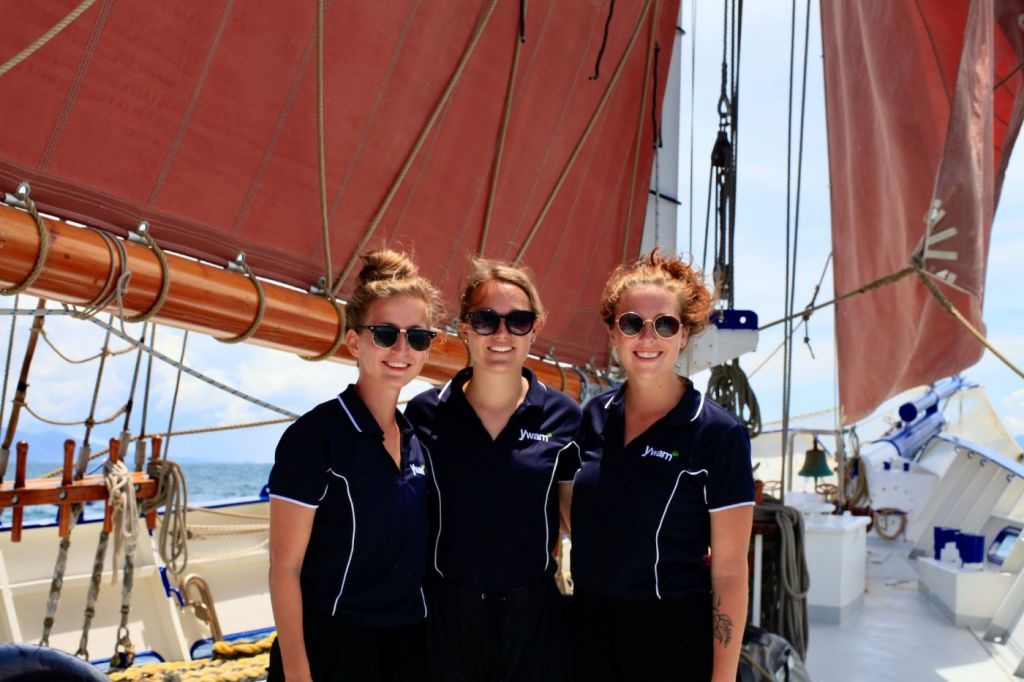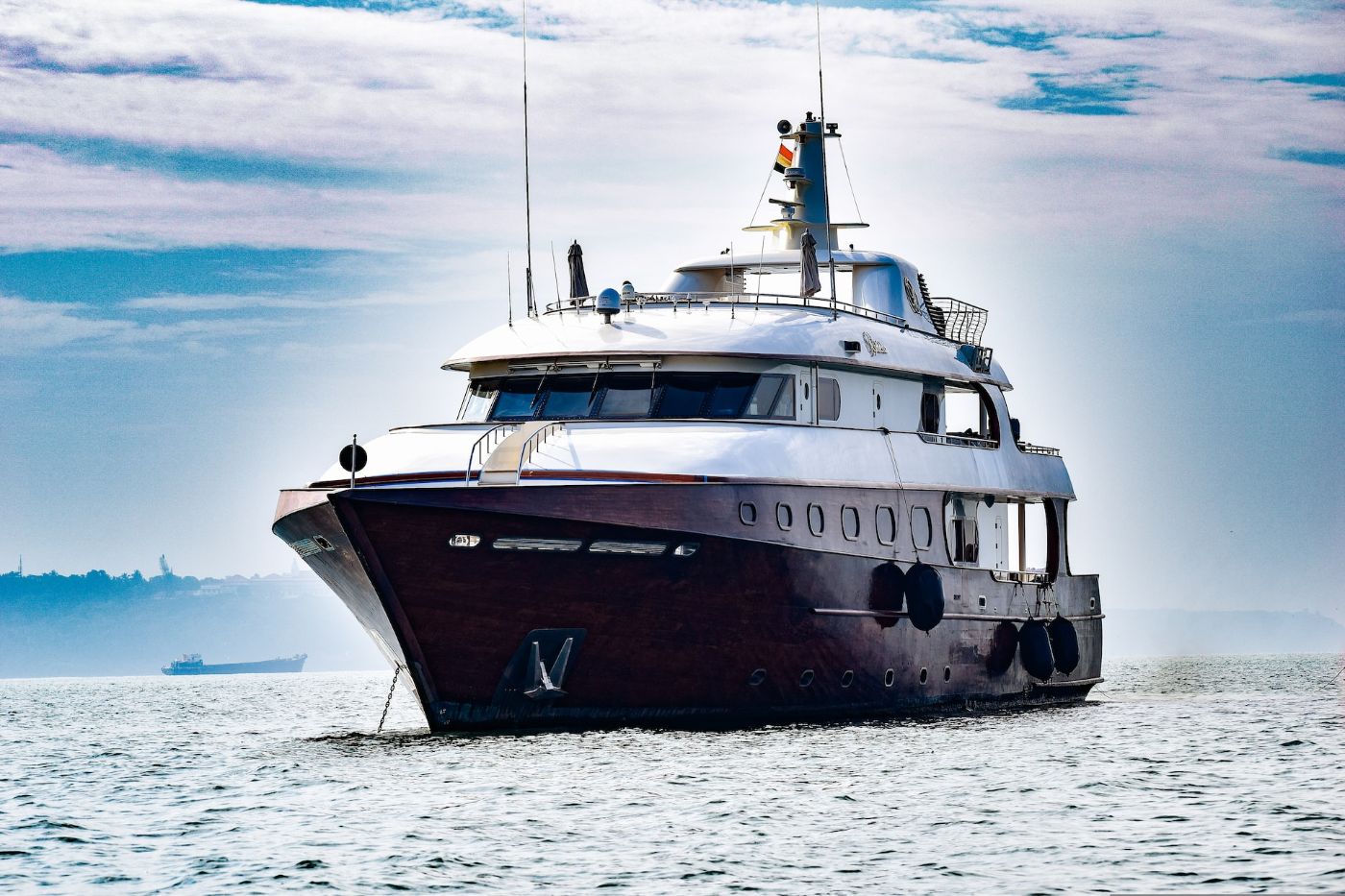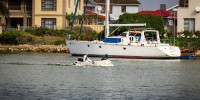What Size Yacht Requires a Crew? (For Different Lengths)
While smaller yachts can be operated by a single person, larger yachts require a trained crew to operate them safely. Different types of yachts also have different crew needs, which can depend on the yacht's size, features, and intended use. In this article, we'll let you know what size yacht requires a crew, and how many crew are needed for different types and lengths of yacht.
Yachts that are over 30 feet in length require a crew to operate them safely. A yacht that is 100 feet in length requires a crew of at least four to six people, including a captain, engineer, stewardess, and deckhand. Meanwhile, yachts that are under 30 feet in length can be operated by a single person.
Recreational yachts are typically smaller and used for leisure activities like fishing, cruising, and water sports. Since these yachts are usually 30 feet or smaller, they can be operated by a single person without a crew. Let's see how many crew members are needed for other types of yachts.
Summary
- If the yacht is under 30 feet and is being used for recreational cruising, a crew of two is usually sufficient.
- A 90-foot yacht with multiple decks and luxury amenities may require a crew of 8–12 people, including a captain, first mate, chef, stewardess, and deckhand.
- For sailing yachts between 30 and 50 feet, a crew of four to six is typically required.
- A small superyacht may have a crew of around 20 people, while a larger one may require a crew of 50 or more.
- The cost of hiring a full-time yacht crew can range from $50,000 to $200,000 per crew member per year.

On this page:
Crew Requirements For Different Yacht Sizes
The size of the yacht is a key factor in determining whether you will need a crew and how many crew members you will require. Below is a table summarizing the crew size requirements for different yacht sizes:
| Yacht length | Crew size |
|---|---|
| 20-30 feet | 1-2 |
| 30-40 feet | 2-3 |
| 40-50 feet | 3-4 |
| 50-60 feet | 4-5 |
| 60-70 feet | 5-6 |
| 70-80 feet | 6-8 |
| 80-90 feet | 8-10 |
| 90-100 feet | 10-12 |
| 100-120 feet | 12-15 |
| 120-150 feet | 15-20 |
| 150-200 feet | 15-20 |
| 200-300 feet | 20-30 |
| 300+ feet | 30+ |
Crew size for yachts under 30 feet
Yachts that are under 30 feet in length are generally small enough to be operated by a single person. However, you still need to have some experience and knowledge of boating to operate them safely. It is also recommended to have at least one additional person on board for safety reasons.
If the yacht is being used for recreational cruising, a crew of two is usually sufficient. You may also need to obtain a recreational boating license depending on your location.
Not sure how to get a boating license? Find which state you're in and get a boating license here.
Crew size for yachts between 30 and 75 feet
Yachts that are between 30 and 75 feet in length may require a crew. These yachts are designed to be operated by a small crew or a couple, with one person serving as captain and the other as crew.
If you have experience and the yacht has upgraded features like autopilot, you may be able to captain your own yacht without a crew. However, if you are new to yachting or the yacht has more advanced features, you may need to hire a crew.

For recreational cruising, a crew of two to four people is usually sufficient. For larger yachts, there may be additional crew members such as a chef, stewardess, or engineer.
Crew size for yachts over 75 feet
Yachts that are over 75 feet in length generally require a crew to operate them safely. The exact number of crew members you will be based on the size and features of the yacht.
- A 90-foot yacht with multiple decks and luxury amenities may require a crew of 8-12 people, including a captain, first mate, chef, stewardess, and deckhand.
- A 100-foot yacht with advanced navigation and communication systems may require a crew of 10-15 people, including a captain, engineer, deckhand, chef, stewardess, and possibly a security officer.
- A 120-foot yacht with a helicopter pad, swimming pool, and other high-end features may require a crew of 12-20 people, including a captain, engineer, deckhand, chef, stewardess, helicopter pilot, and other specialized staff as needed.
Crew size for yachts over 300 feet
Bigger yachts require more crew members because they tend to be more complex and have more systems and equipment that need to be maintained and operated. Additionally, larger yachts typically have more amenities and features that require specialized staff, such as spa therapists, dive instructors, and security personnel.
A yacht that is 300 feet or more in length may have multiple decks, a helipad, a swimming pool, a movie theater, a gym, and other luxurious amenities that require a larger crew to operate and maintain.
In addition, larger yachts may require more crew members to ensure the safety of the guests and the vessel, especially when navigating in challenging waters or during adverse weather conditions. Larger yachts also often provide a higher level of service, which requires more crew members to ensure that every guest's needs are met.
Yacht Types And Their Crew Needs
Different types of yachts have different crew needs, which can depend on the yacht's size, features, and intended use. Here's what you need to know about yacht types and their crew needs:
| Yacht type | Yacht size range | Intended use | Estimated crew size |
|---|---|---|---|
| Recreational yacht | 20-100 ft | Personal use, weekend trips, fishing | 1-5 |
| Sailing yacht | 30-200 ft | Racing, cruising, adventure, exploration | 5-20 |
| Superyacht | 100-500 ft | Luxury, entertainment, social events | 20-50 |
| Commercial yacht | 50-300 ft | Charter, tourism, research | 10-50 |
| Luxury yacht | 50-200 ft | High-end amenities, personal service | 10-30 |
Crew size for recreational yachts
Recreational yachts are typically smaller and used for leisure activities like fishing, cruising, and water sports. Yachts that are 30 feet or smaller can usually be operated by a single person without a crew.
However, larger recreational yachts, like those in the 50-100-foot range, may require a small crew for maintenance and management.
Crew size for sailing yachts
Sailboats are a popular type of yacht used for racing, cruising, and exploring. For sailing yachts between 30 and 50 feet, a crew of four to six is typically required. This crew would include a captain, a first mate, a cook, and one or two deckhands.

For yachts over 50 feet, the crew size can range from six to 20 or more. This is because some yachts may also have additional staff, such as a chef, a stewardess, and a masseuse. These staff members are typically hired to provide luxury services to guests onboard.
One of the hidden costs of buying and owning a 50-foot yacht is the costs for staff and crew, which ranges around $50,000 - $150,000 per year.
Crew size for superyachts
Superyachts are the largest and most luxurious yachts on the market, typically measuring over 100 feet in length. A small superyacht may have a crew of around 20 people, while a larger one may require a crew of 50 or more.
Larger superyachts with more amenities and more guests on board will require a larger crew to ensure that all aspects of the vessel are properly maintained and operated. The team will typically include a captain, first mate, engineer, chef, stewardesses, deckhands, and other specialized roles depending on the yacht's amenities.
Some owners may prefer a smaller crew to maintain a more intimate and personalized experience, while others may opt for a larger crew to ensure that all tasks are handled efficiently and to the highest standard.
Crew size for commercial yachts
Commercial yachts are required to have a crew size that is appropriate for the size and type of the vessel, as well as the number of passengers on board. The crew size can vary greatly depending on the yacht's size, amenities, and intended use.
In general, larger yachts will have a larger crew, while smaller yachts may only require a few crew members. For example, a small yacht that is used for day trips or short-term charters may only require a captain and a mate. However, a larger yacht used for extended charters or as a luxury hotel at sea may need a larger crew.
The crew size for commercial yachts is regulated by various maritime authorities, such as the International Maritime Organization (IMO) and the United States Coast Guard (USCG). These authorities have established minimum crew requirements based on the size and type of the yacht, as well as the number of passengers on board.

Based on USCG requirements, a commercial yacht that is less than 100 gross tons and carries up to 12 passengers must have at least one licensed captain and one crew member. If the yacht carries between 13 and 36 passengers, it must have at least two licensed crew members. For yachts that are over 100 gross tons, the crew size requirements will be higher.
A captain license costs around $700 - $800, but this may vary according to the country as well as potential extras you might need to purchase.
Crew size for luxury yachts
Luxury yachts are designed for comfort and style, typically featuring high-end amenities like spas, gourmet kitchens, and entertainment systems.
Luxury yachts require a larger crew because they are typically larger, more complex, and more luxurious than other types of boats. A larger crew is necessary to ensure that everything runs smoothly and that the guests have an enjoyable and comfortable experience on board.
Here are some of the reasons why luxury yachts require a crew of 10-30 persons:
-
Safety: A larger crew is necessary to ensure the safety of the guests and the yacht. The crew must be trained and experienced in handling emergency situations, such as fires, medical emergencies, and adverse weather conditions.
-
Navigation: Luxury yachts require a skilled crew to navigate the vessel safely and efficiently. The captain and crew must be familiar with the yacht's systems, equipment, local waterways, and navigation rules.
-
Maintenance: Luxury yachts require constant maintenance to keep them in top condition. A larger crew is necessary to perform routine maintenance tasks, such as cleaning, painting, and repairing the yacht's systems and equipment.
-
Service: Luxury yachts are known for their high level of service and hospitality. A larger crew is necessary to provide guests with personalized service, including gourmet meals, housekeeping, and other amenities.
-
Entertainment: Luxury yachts often have a variety of entertainment options, such as water sports equipment, movie theaters, and music systems. A larger crew is necessary to operate and maintain these amenities, as well as to provide instruction and assistance to the guests.
The Cost Of Hiring A Yacht Crew And The Role of Each Member
The cost of hiring a full-time yacht crew can range from $50,000 to $200,000 per crew member per year. This includes their salary, benefits, and any other expenses associated with their employment, such as training and uniforms.
Here's a breakdown of the average annual salaries for different yacht crew positions:
| Position | Estimated annual salary |
|---|---|
| Captain | $80,000 - $300,000 |
| First Officer | $60,000 - $120,000 |
| Chef | $50,000 - $120,000 |
| Steward/ess | $35,000 - $80,000 |
| Engineer | $60,000 - $150,000 |
| Deckhand | $30,000 - $55,000 |
The roles and responsibilities of the captain
- Responsible for the overall operation of the yacht including navigation, safety, and communication with other vessels
- Must have extensive knowledge of waterways
- Must make quick decisions in case of emergency
- Must hold valid Merchant Mariner Credential (MMC) issued by USCG
- For yachts over 100 gross tons, a captain must hold a USCG license for appropriate tonnage and route
- May need to hold specific endorsements, such as a towing endorsement or a radar observer endorsement
The roles and responsibilities of the captain engineer
- Responsible for mechanical systems on board the yacht such as engines, generators, and other equipment
- Must have a good understanding of how systems work
- Troubleshoots problems that arise
- Works closely with the captain and other crew members
- May be responsible for managing inventory and ordering spare parts and supplies
The roles and responsibilities of the stewardess
The stewardess is the first point of contact for guests and they are responsible for the following:
- Greet guests warmly and show them to their cabins
- Provide information about the yacht and its amenities, as well as local attractions and activities
- Clean and maintain guests' cabins
- Make beds and ensure fresh towels and linens
- Responsible for serving meals and drinks, setting the table, and clearing dishes
The roles and responsibilities of the deckhand
The deckhand is an entry-level position on a yacht and they work under the supervision of the first mate. They are responsible for a variety of tasks such as:
- Cleaning the yacht and handling lines and fenders
- Assisting with navigation and docking
- Maintaining the exterior of the yacht, such as washing and waxing the hull, cleaning the decks and windows, and maintaining the yacht's equipment and machinery
The roles and responsibilities of the chef

- Responsible for providing exceptional culinary experiences for guests
- Plans menus, prepares meals and manages galley and kitchen area
- Plans menus that meet the dietary preferences and restrictions of guests
- Creates menus for breakfast, lunch, and dinner, as well as snacks and appetizers
- Responsible for provisioning the yacht with fresh ingredients and supplies
- Prepares high-quality meals and presents them well
- Manages galley and kitchen area, including cleaning and maintaining the kitchen, managing inventory and ordering supplies, and ensuring that all equipment is in good working order
The roles and responsibilities of the first mate
- Considered as the second in command on a yacht
- Works closely with the captain to ensure the safe operation and navigation of the boat
- Responsible for managing crew and overseeing day-to-day activities on board
- Assists captain with navigation and piloting of yacht
- Monitors weather conditions, charts courses, and ensures the yacht is on track and avoiding potential hazards
- Manages crew and delegates tasks as needed
- May be responsible for scheduling and coordinating crew shifts, managing inventory and ordering supplies, and ensuring that the yacht is clean and well-maintained
- May serve as liaison between guests and captain, ensuring that their needs are met and that they have an enjoyable experience on board
The roles and responsibilities of the second mate
- Assists captain and first mate in navigation and operation of yacht
- Maintains the yacht's navigational equipment, including GPS, radar, and other electronic devices
- Monitors weather conditions, charts courses, and ensures the yacht is on track and avoiding potential hazards
- Ensures all charts and publications are up-to-date and that any necessary corrections or updates are made.
Did you find the answer to your specific question?
👍 0 👎 0




Leave a comment